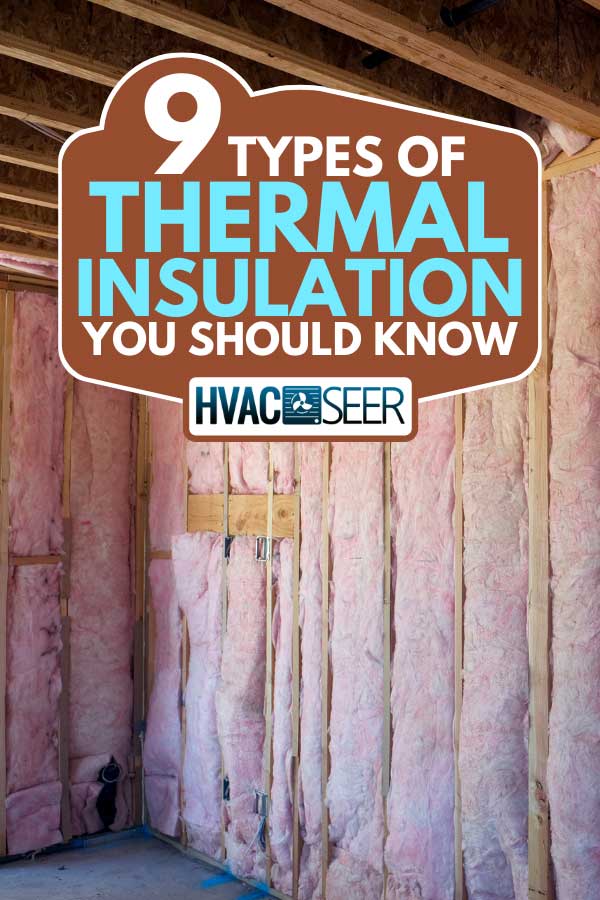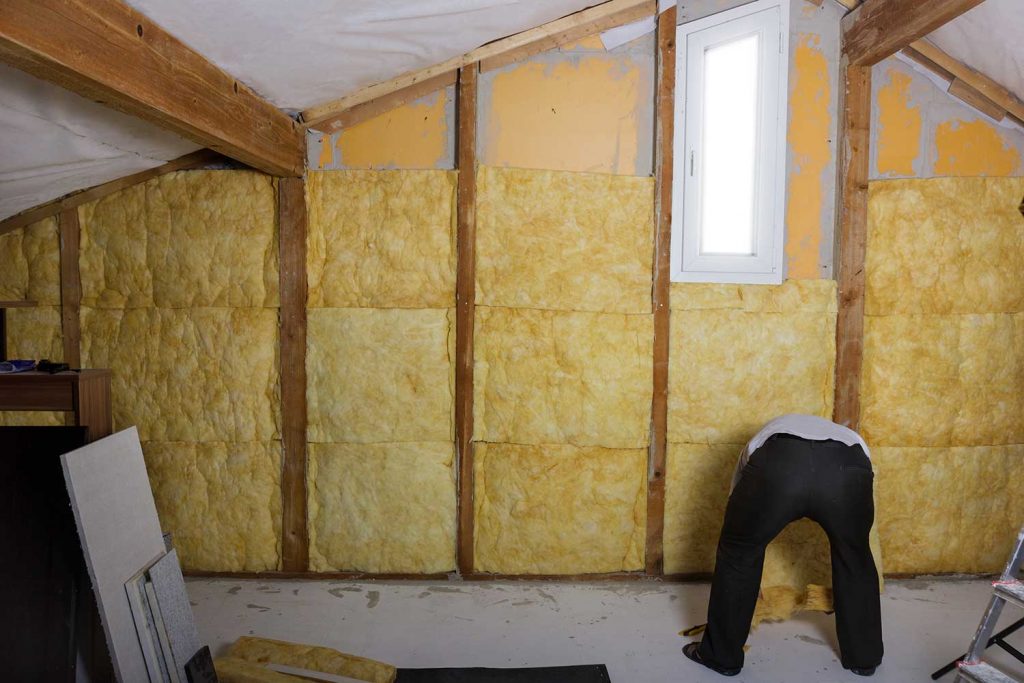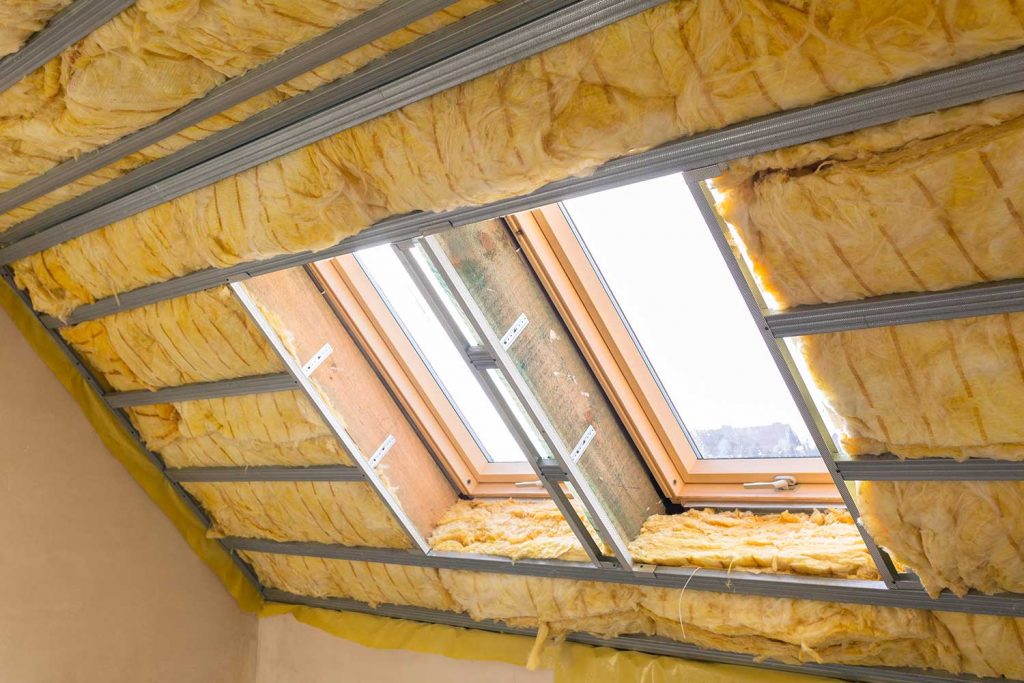Installing quality insulation in your attic and around the other areas of your house can help you save a considerable amount of money each year in energy costs. Properly installed insulation can help you retain cooler temperatures during the summer months and prevent heat loss during the year's colder months. In this post, we will cover the different types of insulation to know which one would be the best fit for your project.
There are several thermal insulation materials available to choose from. Here are the most popular insulation materials:
- Cork
- Cellulose
- Blanket
- Structural Insulated Panels (SIPs)
- Loose-Fill
- Rigid Foam Panels
- Aerogel
- Glasswool
- Rigid Fiber Board Panels
Continue reading to learn more about each type of insulation material.

Cork
Another great insulation material that you may not hear about is often is cork. Cork insulation comes in semi-rigid boards typically about 2 inches thick and 6ft in square footage. The cork sheets work as stable insulators and are available in a variety of thicknesses and sizes. They are on the more expensive side, and you can expect to pay about $25 to $35 for just one sheet.
Installation Methods
Cork sheets can be installed by cutting the boards with a jigsaw to fit them into cavities or walls (you'll also need to hammer them into place). They are definitely a DIY-friendly type of insulation material and can be installed within just a few hours.
Where to Use
Interior walls, ceilings, floors, roofs, attics, and crawl spaces
Advantages
- Cork is naturally waterproof and fire-retardent
- Can also work as an effective sound-proofing material
- Works as an effective insulation material
Disadvantages
- It's costly
- Can give off a "burnt cork" smell after a few years or during summer months
Check out this cork insulation on Amazon!
Cellulose
Cellulose is perhaps the most commonly used form of blown-in or loose-fill insulation. It's fairly inexpensive and can be bought anywhere from $1 to $2 per square foot. It's mostly made of recycled paper and comes in both wet and dry versions for convenient installation. Most cellulose insulation is treated with boric acid, sulfate, and borax to help reduce mold growth and enable fire resistance.
Installation Methods
Cellulose can be blown in with a blower or injected. It can also be physically poured.
Where to Use
Enclosed or new wall cavities, unfinished attics are spaces, crawl spaces, hard to reach spaces, interior walls, etc.
Advantages
- Ideal for attics or crawl spaces that have irregular shapes or small crevices.
- Can easily be installed in areas that have a lot of obstructions such as pipes, electrical wiring, or other building components
- Is normally fire-retardant
Disadvantages
- Can be messy to install for first-time DIY enthusiasts
- It can make for an expensive install if you use a professional
- Can begin to rot if it gets wet or damp
- Sometimes chemical treatments can be hazardous
- May settle over time and become less effective
Blankets

Blanket insulation is available in rolls or batts (which are cut up blocks of insulation). It is usually the most affordable and readily available type of insulation at most home improvement stores. Blanket insulation typically costs around $0.60 to $1.50 per square foot and can be made from various materials, including cotton, mineral wool, fiberglass, and plastic.
Installation Methods
Blanket insulation is fairly easy to install and can be done without the help of a professional. Rolled blankets will need to be cut to fit between spaces, as will batts if they are too wide or long to fit between the joists. Installation requires laying the blankets into the cavities or crevices of your home.
Where to Use
Ceilings and attics, ductwork, interior walls, crawl spaces and floors, basements, and sidewalls
Advantages
- One of the most affordable thermal insulation options
- Can also work as an effective sound-proofing material
- Can come in pre-sized batts, which make for quick and easy installation
- Comes in a wide variety of R-values, starting as low as R-10 and going as high as R-45
- Can be an easy DIY project which allows you to save on installation costs
Disadvantages
- Blanket insulation can be difficult to into small cracks and crevices, making them challenging to install in smaller attics or crawl spaces.
- It can get wet and become less effective.
- Depending on the brand, it can sometimes become a home for common house pests.
Check out this fiberglass insulation on Amazon!
Structural Insulated Panels (or "SIPs")

These panels are more common in the commercial building space but are also used in small and large home projects. SIPs usually start at $5 or more and offer sufficient insulation from outside elements.
Installation Methods
SIPs are typically installed by professionals, as they require specific modifications to fit into specific cavities and special sealing with thermal glue.
Where to Use
The boards are usually used in between walls, beneath floors, and on roofs, but they can also be used in other areas of the home as well--they are ideal for new construction projects.
Advantages
- SIPs can offer superior insulation during any time of the year, and they tend to perform better than other types of insulation materials.
- These panels are known for their strength, airtight insulation, and impressive durability.
- Can also work as an effective sound-proofing material
Disadvantages
- The boards are typically more expensive than other insulation materials.
- Professionals can quickly install them. However, they may take a bit longer (and be more challenging) for DIY-enthusiasts.
Loose-Fill Insulation
Loose-fill insulation is probably the most commonly used type of insulation (next to blanket insulation). It's also just as affordable, as you can typically purchase it at from $1 to $1.33 per square foot. This type of insulation is typically made of mostly recycled newspaper, but it's also available in fiberglass, cellulose, and other materials as well.
Installation Methods
It can be installed in various ways, depending on how fast you want to get the job done. It's definitely DIY-friendly insulation, and it can be installed by spraying it in with a blower, pouring it by hand, or injecting it inside wall cavities.
Where to Use
This type of insulation can be used in any area of the home that requires insulation, such as ceilings, attics, crawl spaces, interior walls, etc.
Advantages
- The biggest advantage of loose-fill insulation is that it can easily be installed in various areas, regardless of their shape.
- It's the best option for small attics or crawl spaces.
- Cellulose and fiberglass versions are typically fire-retardant.
- It is typically treated with borate to help prevent pest infestations.
Disadvantages
- It can retain water for a long time, which can cause the insulation to degrade and develop mold.
- Can be messy to install as a DIY project, especially if you don't have a professional-grade blower
- It may contain harmful chemical treatments, depending on the brand.
Rigid Foam Panels
Rigid foam panels are another great way to provide thermal insulation for the various areas in your home. Panels can typically be purchased at around $5 to $8, and you'd need about 74 (at least) panels to cover a 1200 square foot attic. The panels are typically made from polyurethane but can also be made from polystyrene and polyisocyanurate.
Installation Methods
The panels are made for a fairly easy install; they need to be cut to fit inside the home's interior areas. The boards typically come in flat panels about 1/2 inch thick and 4 feet by 8 feet.
Where to Use
Ceilings and attics, ductwork, interior walls, crawl spaces and floors, basements, and sidewalls
Advantages
- Offer significant thermal resistance and heat reduction through building components.
- Can also work as an effective sound-proofing material
- One of these boards' biggest advantages is that they offer a high level of insulation with a minimal amount of thickness due to their density.
Disadvantages
- To provide effective insulation, these boards must be tightly fitted into the walls' cavities, which may take some experience.
- It can also be a time-consuming task to tape the joints between the boards and sheets, which helps prevent airflow.
Check out these rigid foam panels on Amazon!
Aerogels
Aerogel insulation is one of the newest forms of insulation to enter the home improvement market. One of the more expensive forms of insulation, the slabs, cost anywhere from $75 to over $100 each. This high-tech insulation material is actually used in aerospace pipelines and has recently been introduced to help older homes become more energy-efficient. The gel is porous, making it a great thermal insulator, and it is much thinner than traditional insulation such as cellulose and fiberglass.
Installation Methods
The gel boards will first need to be cut into slabs using a jigsaw or utility knife. Once they are placed in position, they're covered with a cement mortar and a mesh screen. This insulation is really isn't DIY-friendly at this time but might be in the future.
Check out this jigsaw on Amazon!
Where to Use
Enclosed or new wall cavities, unfinished attics are spaces, crawl spaces, hard to reach spaces, interior walls, etc.
Advantages
- Aerogel boards off the highest-quality insulation on the market at present, especially considering how thin they are.
- Can also work as an effective sound-proofing material
- They are non-combustible and fire-retardant.
Disadvantages
- Aerogel boards are currently the most expensive thermal insulation option in the marketplace.
- Additional cost will also be improved to install the boards, as they require a skilled professional
- Can be more difficult to purchase in comparison to other insulation materials
Glasswool
Glasswool is another affordable type of batt and blanket insulation. It's normally priced around $0.65 to $2.40 per square foot and can come in a range of R-values (i.e., "thicknesses" or density of the insulation material). It's a durable insulation material that's commonly used in attics. Glass wool is very similar to fiberglass and should also be handled with care as it can cause skin irritation.
Installation Methods
Glass wool is installed by simply cutting the rolls or batts as needed and placing them in between the cavities of the wall, floor space, or other interior areas of the home.
Where to Use
Ceilings and attics, ductwork, interior walls, crawl spaces and floors, basements, and sidewalls
Advantages
- One of the most affordable thermal insulation options
- Can also work as an effective sound-proofing material
- Can come in pre-sized batts, which makes for quick and easy installation
- Can be a DIY project which allows you to save on installation costs
Disadvantages
Glasswool can be difficult to and small cracks and crevices, making it difficult to install in certain attics or crawl spaces.
Rigid Fiberboard
Rigid fiberboard is another well-suited home insulation material. The material is made with fiberglass or mineral wool, and while it can be a DIY installation, it may be better to have professionals install it. You can purchase it at about $2 to $3 per square foot, and you'd need about 60 boards or so to cover a 1200 square foot attic.
Installation Methods
Rigid fiberboard can make for a tricky install, as it needs to be fitted into the cavities of the walls or on the duct boards. If measurements are off even a little, you will end up with drafty cracks and crevices in your insulation.
Where to Use
Foundation walls, unfinished or interior walls, attics, crawlspaces, ceilings, etc.
Advantages
- Offer superior thermal insulation due to their density (and without being super-thick)
- Can also work as an effective sound-proofing material
Disadvantages
- Can make for a rather difficult install for DIY enthusiasts
- Boards can be on the expensive side.
Wrapping Things Up
Whether you decide to install your insulation yourself or have a professional do it, it's important to know how much insulation is needed for your home to adhere to whatever codes are enforced by your local city or government.
Before you go, be sure to check out our other posts:
Do Curtains Provide Insulation? Can You Put New Attic Insulation Over Old?




